Superbike-Coach Cornering School

Entering turn one, the new Dorsoduro 900’s wide handlebar would allow me to easily point the big supermoto toward the apex and then quickly afterward, get it pointed toward the next. Out of the corner of my eye I saw coach Can Akkaya wheelie-ing through the shortcut on the track to make his way in front of me. Can would tap the rear fender of his KTM 450 supermoto shod with race slicks, indicating I should follow his lines closely around the track. As we made our way around the tight little Stockton 99 Kart and Motorcycle track, coach Akkaya would point to each apex and then up to the outside of the track and then back to the next apex while, in between, motioning to keep my eyes up and moving from corner to corner.
Coach Can Akkaya created his Superbike-Coach school after being surprised and underwhelmed by the training motorcyclists were receiving in the United States. He tells an interesting anecdote about easily finishing the DMV motorcycle test shortly after arriving in America, just after another applicant had been docked points on nearly every maneuver. In the end, their paperwork was mixed up and the DMV passed the inexperienced student by accident. This situation would cause Can Akkaya to look into the training opportunities available for new and experienced riders around the country.
Can Akkaya himself, founder of Superbike-Coach, began racing in 1985 and eventually competed at a high level in his home country of Germany. Akkaya would compete on GP250s in the OMK International German Championship, and finished 2nd in Germany’s Track Trophy 250cc Championship in 1991. Can would continue to compete internationally aboard a Honda RS250R, eventually suffering a career-limiting crash at the Hockenheim Ring in Germany before deciding to end his professional racing career in 1995 at an event in Poland.
Can and his family immigrated to the United States about ten years ago, and then in 2009 Akkaya created Superbike-Coach. After Can’s experience at the DMV and in light of his general disappointment with the curriculums being taught at other riding schools, Can decided to begin his own school to bring his riding philosophy and teaching style to students in the US. Superbike-Coach is a somewhat deceiving name because it is not strictly a race school. Principles are taught to students with varying levels of riding experience, but Akkaya claims they can also be applied to roadracing.
Akkaya’s disinterest in parking lot schools and maneuvers would cause him to look elsewhere when searching for an appropriate teaching venue – eventually settling on the Little Stockton 99 Kart and Motorcycle track in Stockton, California. The the dusty little circuit offers Akkaya a perfect environment, with lots of repetition providing maximum safety and benefit to his students.
Day 1 of the Cornering school started with the basics. Beginning at 8:30 am and wrapping up around 4:30 pm, the school offered a mix of in-classroom lessons followed by track sessions to apply what had been covered. Riders were separated into A, B, and C groups by experience level with A being the most experienced. The three groups then took to the track one after another for the riding portions.
After Can’s introduction, which would include a brief overview of the course and the students’ profiles, as well as his own history, we began to discuss what causes fears to arise while riding on the street and how we could learn from repeating good practices on the track. We would then be sent out in our respective groups so Coach Akkaya could have a look at everyone’s riding habits and skill levels.
Once the groups were finished with the first track sessions, Akkaya then began to discuss the concept of the ideal line, late apexes and why they aren’t always good, and the variables that determine the “best” line through a corner. For the next riding session Akkaya joined us on the track aboard his slick-shod supermoto to focus on line selection. Can did a great job during each session of spending time with each rider while we worked our way around the track; he was effectively able to dedicate more time to those who needed it most, without neglecting anyone else.
In the morning the staff took orders and collected money for lunch, which we would enjoy later in the day. It appeared that everyone was having a great time and some were visibly improving their confidence and line selection as they accumulated laps. I asked around and found many students who had already taken the school before and then brought friends to share the experience. One such returning student was a woman named Sheila, who began riding in the ’60s, then took a slight hiatus from motorcycling to bear her children. Sheila brought about six of her riding friends to the class and then decided to join them even though she had already been through the cornering school Days 1-4. A fan of Can’s somewhat boastful and brash teaching style, she believes in Can’s experience has made her a more competent and confident motorcyclist. Of the diverse group of 26 students attending this Day 1 cornering school, nearly half were female. From skill levels, to motorcycles, and even a broad mix of demographics, it was a great mix of students who all appeared excited to learn.
Jumping into lesson three, the classroom portion would focus on what Can calls “waypoint viewing” in which “the nose leads and the bike follows.” This technique not only focuses on looking where you want to go, but viewing your waypoints in succession and having the bike follow your eyes through each. We also would talk about viewing the horizon and finding the sweet spot of looking too far or too close. With my own relatively modest on-track experience level, this was a chance for me to apply a technique which I may have already been aware of, yet can always use more time practicing. Again Akkaya would join us on the track to point out lines and remind us to keep our eyes up and view as far forward as comfortable while using his waypoint viewing technique.
The final classroom lesson would cover emergency braking (not to be confused with racing, trail-braking or other track use). Can touched on the importance of the front brake and his theory of the rear brake being useless in emergency scenarios, “If you’re truly braking at the limit, the rear tire should be off the ground, it’s not going to do shit for you anyway.” (On standard and sporting motorcycles on clean and dry pavement. But the real world is full of variables and sometimes those variables make the rear brake very useful even in emergencies, not to mention choppers exist. -Ed.) We would also go over the very valuable practice of easing into the front brake and smoothly increasing lever pressure rather than just grabbing the brakes and upsetting the chassis. After some fun track time testing the big Aprilia’s front brake and lofting its rear wheel while the front tire chirped away, Can stopped my group, gave some pointers, and then followed suit with the rest of the groups.
At the end of the day, there wasn’t a face to be found without a grin on it. Everyone had spent the day together, learned together, ate lunch together, and laughed together. At that point it felt much more like a community of friends and riders rather than just a bunch of random people. Can Akkaya’s approach is brash and unforgiving. I loved it. However, while I enjoyed the cursing and lewd jokes as most of the class did, I noticed some faces in the beginning of the class that didn’t seem so enthused with the colorful language. Those same people, at the end of the day, were the most outspoken and looked to have opened up to the atmosphere of the class, whole-heartedly.
For a level-one type class I would have liked to see a bit more focus on racetrack etiquette (flag rules, signalling, entries and exits, etc.) and some general safety standards for riding on a track with other riders of varying experience levels. There were no accidents while I was there, however more safety training can ensure things stay that way. We also received a great workbook upon registration that included the schedule, track information, itineraries of Day 1-4 and a workbook section for each day. After receiving them, the only time we used them was to draw what we considered the best line around the track map. There was a good amount of fill-in-the-blank type questions I believe students could certainly use this to look back on their training and to refresh what they learned.
I have been riding motorcycles for 10 years. I’ve ridden a ton of canyon roads, toured across the country, spent a fair amount of time in the dirt, and had done one single track day prior to this school. I’d honestly assess my own skill levels as slightly above average, and while I am a fast learner, I’m not a former racer or an ex-school instructor or anything like that. To me, Day 1 of the Superbike-Coach Cornering school was focused on laying the basic principles that can help any rider regardless of skill level. That being said, riders with a fair amount of experience or schooling may find Day 1 a bit too remedial for their tastes.
The best way to get the most out of these classes though, is to go in with an open mind and check your ego at the gate. I was able to take away lessons that will help me in many situations and I got plenty of time to practice and reaffirm what I already knew. I was happy with the school and I enjoyed Can Akkaya’s teaching methods, the class/track break-down, and the time spent with fellow riders there to learn. For only $139 , Cornering School Day 1 at Superbike-Coach is a great place to learn the fundamentals of safe riding from a talented instructor who bridges the gap between track and street techniques in order to show that quality time spent on a racetrack can provide learning experiences that will last a lifetime out in the real world.
To learn more about the classes offered from Superbike-Coach and Can Akkaya, visit www.superbike-coach.com.

Ryan’s time in the motorcycle industry has revolved around sales and marketing prior to landing a gig at Motorcycle.com. An avid motorcyclist, interested in all shapes, sizes, and colors of motorized two-wheeled vehicles, Ryan brings a young, passionate enthusiasm to the digital pages of MO.
More by Ryan Adams



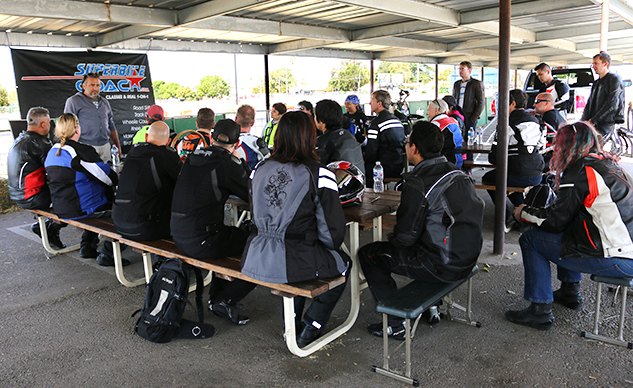
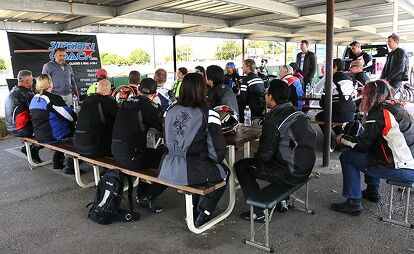

























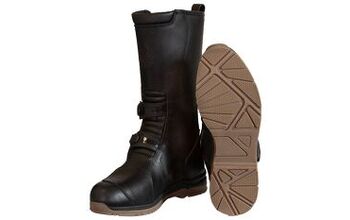



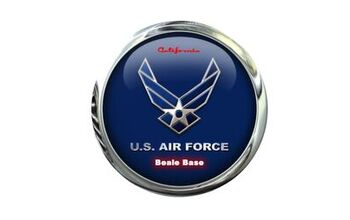




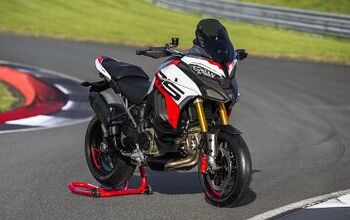





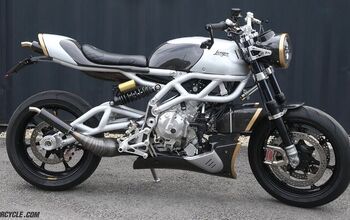


Comments
Join the conversation
Cornering School Day 1 dates for 2018 are up: https://www.superbike-coach...
Hope you guys are coming back to take on Day 2 in April https://www.superbike-coach...